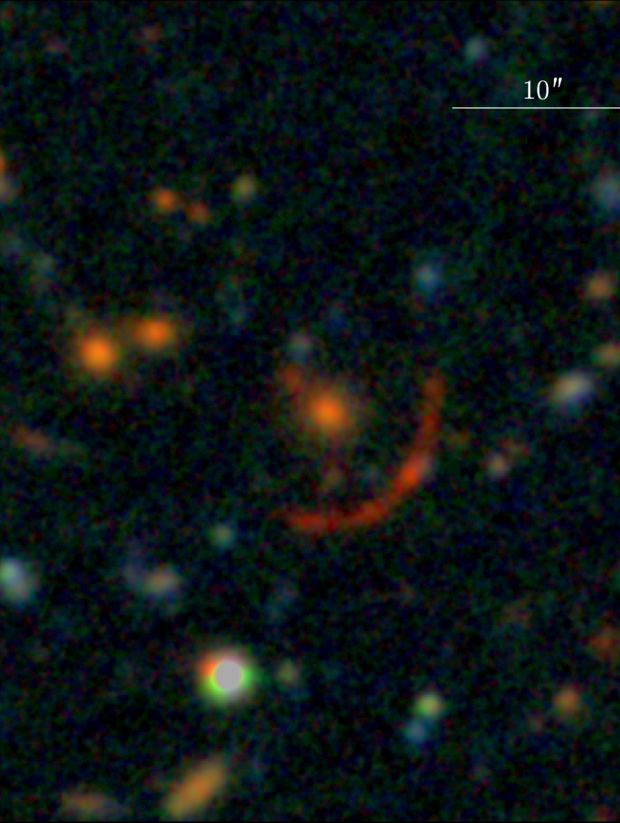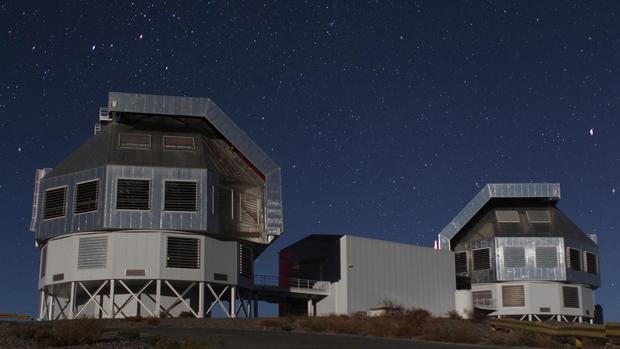University Of Chicago Astrophysics Students Discover Galaxy Dating Back To Early Universe
CHICAGO (CBS) -- A class of University of Chicago college undergrads helped discover a galaxy that dates back to when the universe was only a tenth as old as it is today, the university announced Thursday.
"This galaxy that we've observed, by looking out and back into the past, is already grown up. It's already formed almost a Milky Way's worth of stars," Michael Gladders, a professor at the U of C's astronomy and astrophysics department, said in a news release. "It's quite mature, but at a much earlier stage in the Universe."
The discovery was a major milestone for the first iteration of a field course developed for a new astrophysics major at the U of C. The university has offered astrophysics classes for generations, and scientists at the university have been studying astrophysics for more than a century, but astrophysics only became an option as a major during the 2018-2019 academic year.
Students in the two-quarter class who made the discovery formed a new research collaboration called COOL-LAMPS – an acronym for "ChicagO Optically-selected strong Lenses – Located At the Margins of Public Surveys" – and looked through public imaging databases searching for lensed galaxies.
As writer Katrina Miller explained in a UChicago News article, a lensed galaxy is one whose emitted light is bent by the gravity of a large object that is in the way of the point of observation. The result is "a distorted, arc-like image of the galaxy with an intensely magnified brightness, Miller wrote.
The galaxy the students helped discover was confirmed by observations from the ground-based Magellan Telescopes in Chile, and the Gemini North telescope in Hawaii, the U of C said.
The university noted that light emitted from faraway celestial objects takes a long time to reach observers on earth, and thus, the stars and galaxies as we see them appear as they actually would have existed millions, or billions, of years ago.
The discovered galaxy's light dates back to a time when the universe was 1.2 billion years old – a tenth of its current age, the U of C said. By that point, the galaxy had already accumulated a mass comparable to the present-day Milky Way, the U of C said.
The field course pushed ahead and the students helped make the discovery despite limitations brought on by the coronavirus pandemic. Gladders had intended to have the students travel to Chile to use the Magellan Telescopes over spring break, but the pandemic prevented that from happening.
"Everything was booked," Gladders was quoted in Miller's article. "I'd already arranged trips to other observatory sites, construction sites to see telescopes that were currently being built, and to see Chile itself."
But students made do with what they had available, and discovered the galaxy using public sky data.
"For me, it was a shock that we had found something so important," fourth-year astrophysics major Emily Sisco was quoted in Miller's article. "All of the work we had been doing was leading up to that moment, but I was still shocked!"
The COOL-LAMPS collaboration does plan for a second wave of studies – this time observing the newly-discovered galaxy using telescopes in New Mexico and Europe, and information from NASA's orbiting space telescopes – the Hubble and the Chandra X-ray Observatory, Miller wrote.
The U of C undergrads who wrote the research paper are Katya Gozman, Jason J. Lin, Michael N. Martinez, Owen S. Matthews Acuña, Elisabeth Medina, Kaiya Merz, Jorge A. Sanchez, Emily E. Sisco, Daniel J. Kavin Stein, Ezra O. Sukay, and Kiyan Tavangar. Ph.D. candidate Gourav Khullar was the lead author of the paper.
There are also co-authors from the University of Michigan, the University of Cincinnati, Argonne National Laboratory, Harvard University, the University of Oslo, the NASA Goddard Space Flight Center, and the Harvard & Smithsonian Center for Astrophysics, the U of C said.
Also From CBS Chicago:





